

Introduction
The history leading up to and surrounding this revival is vital if one is to understand what occurred. We will attempt to keep the historical details to a minimum and make an effort to focus on the reviving that took place through the ministry of the prophets Haggai and Zechariah.
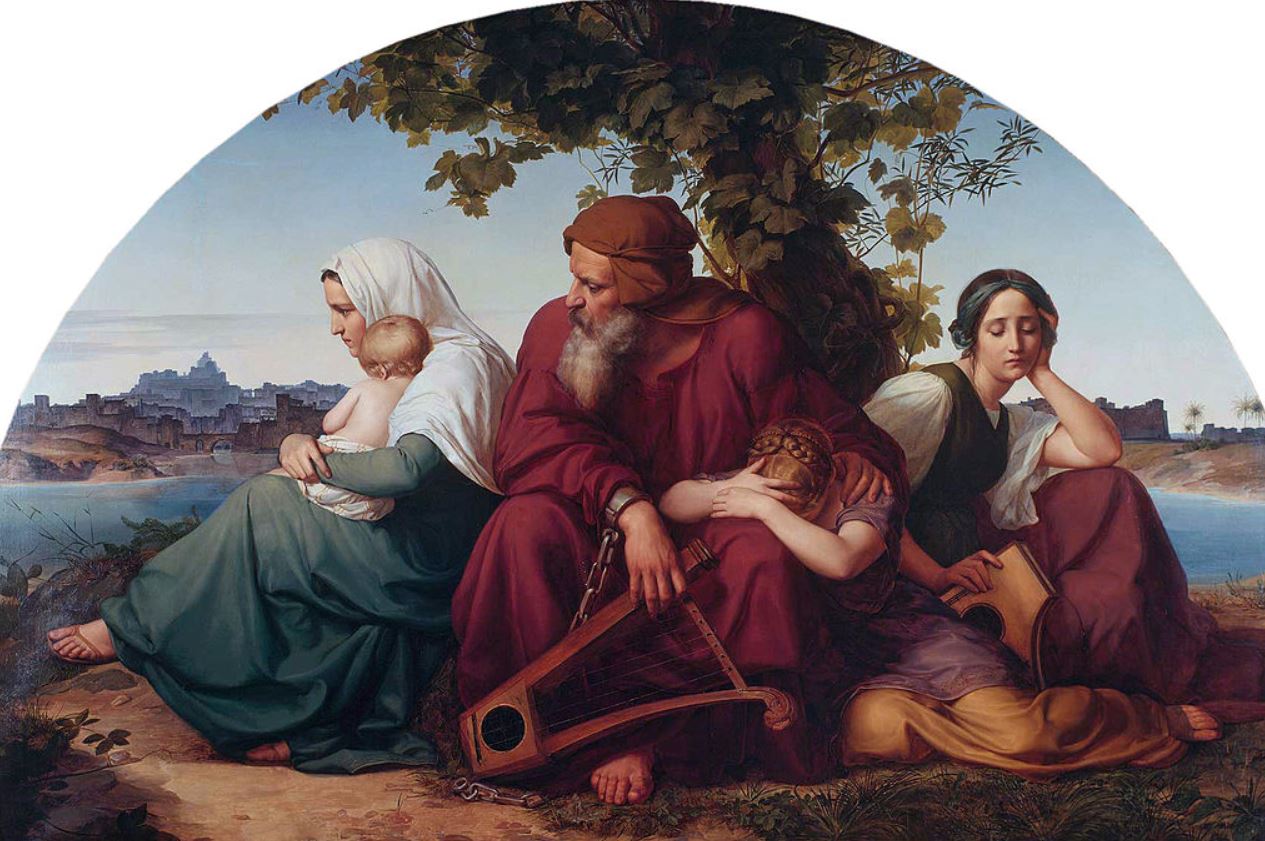
Jews in Babylonian captivity (Psalms 137:1-9)
“But how can we sing the songs of the Lord
while in a pagan land?” (Psalms 137:4)
Brief Historical Framework
► Israel had been ruled by kings for approximately 439 years.
► Out of the 42 kings (and 1 queen), only 5 were considered godly, with a few more who were godly some of the time.
► Because of the idolatry and rebellion, God disciplined the nation of Israel by using foreign nations to overthrow them.
► In 722 B.C., the northern Kingdom of Israel was overthrown, and the people were forcefully deported by the Assyrians. At the same time the Assyrians colonized the land with foreigners. These people of foreign nationalities intermarried with the few poor remaining Israelites, and the mixed offspring became known as the Samaritans (1 Chronicles 5:26;.2 Kings 15:29, 17:3-6, 24, 18:9-12).
► Approximately 135 years after the Kingdom of Israel was conquered by the Assyrians, the southern Kingdom of Judah was overthrown by the Babylonians (587 B.C.).
► As the Assyrians deported most of the inhabitants of the northern Kingdom of Israel, the Babylonians did the same, and most of the people who were living in Jerusalem were force-marched to Babylon to be slaves (leaving behind the poorest of the people to farm the land).
► The prophet Jeremiah prophesied of this destruction and exile to Babylon. He also prophesied that the duration of their captivity in Babylon would be 70 years (Jeremiah 25:11).
► The prophet Isaiah foretold of a foreign king that would eventually arise, authorizing the return of the exiled Jews in Babylon to Jerusalem (Isaiah 44:28; 45:1-13).
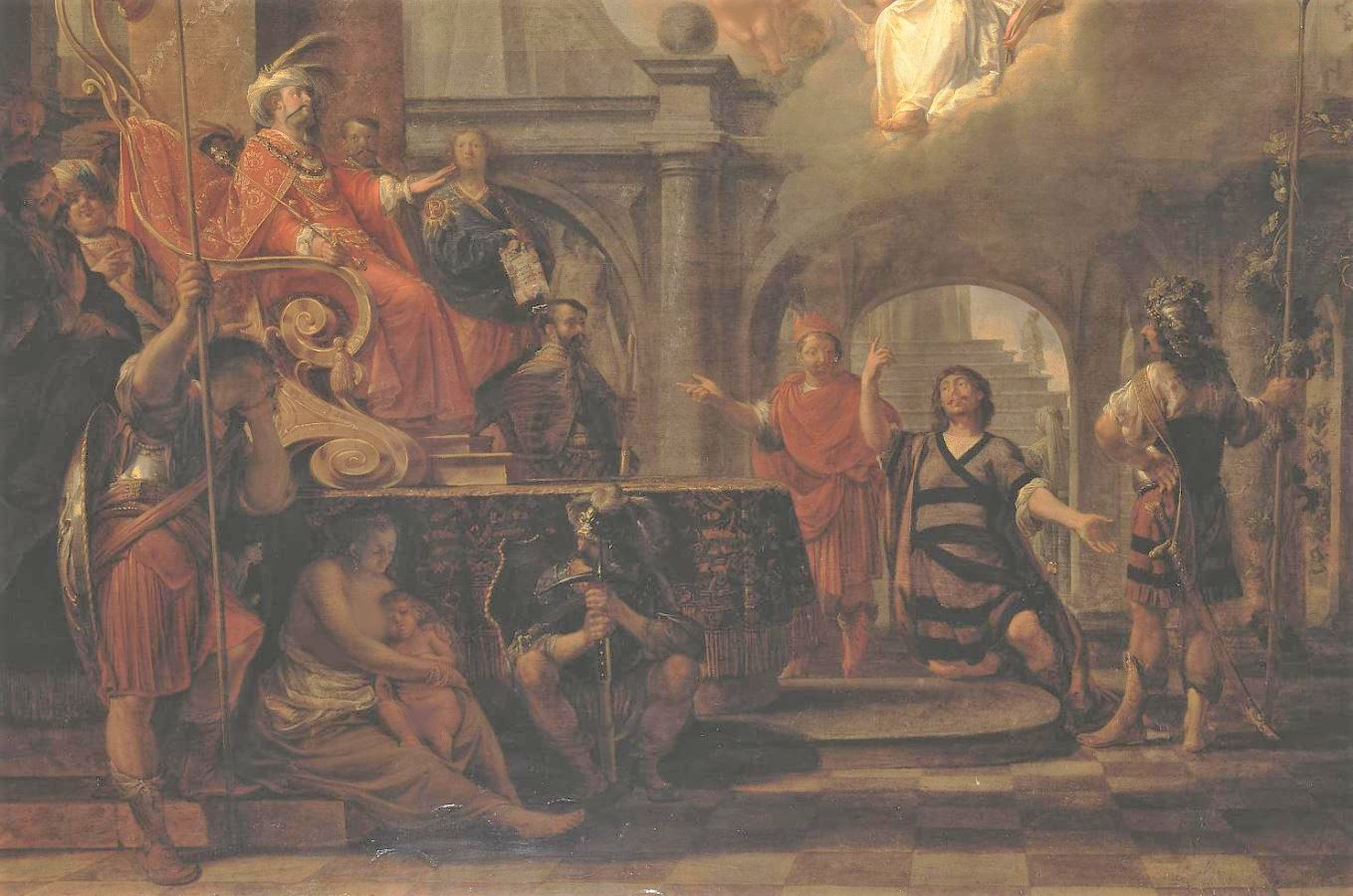
Zerubbabel kneeling before the new Persian king
Release of Jews from Babylonian Captivity
The Babylonian empire was overthrown by the Persian Empire in 539 B.C. The king of this Persian empire was Cyrus, and during the first year of his reign, following Isaiah’s prophecy, he authorized the return of any Jews who wanted to go back to Jerusalem and assist in the construction of the temple (Ezra 1:1-4). This fulfilled Isaiah’s prophecy mentioned in Isaiah 44:28; 45:1-13.
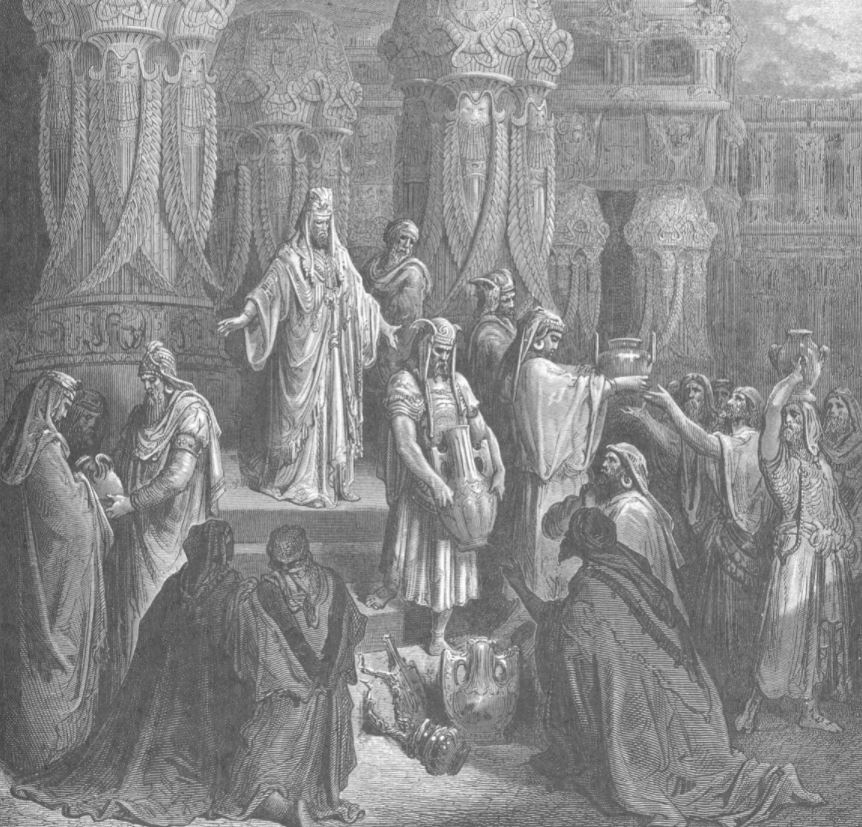
Cyrus, returning objects that were taken from the temple 70 years earlier
Cyrus also turned over all the plundered articles that were taken from the Jerusalem temple 70 years earlier (Ezra 1:7-11). In addition, he provided finances for the construction of the temple (Ezra 3:7; 6:3-5, 8-10).

Return to Jerusalem
After Cyrus uttered his decree to allow Jews in Babylon to return to Jerusalem to rebuild the temple, 49,897 people (Ezra 2:64-65), led by Zerubbabel (Ezra 2:2), made the journey back to Jerusalem. Working together with Zerubbabel was Jeshua, the High Priest (Ezra 2:2; 3:2; Haggai 1:1).
Restoring the Altar for Burnt Offerings
Along with the priests, Zerubbabel immediately restored the altar for burnt offerings (Ezra 3:2-3) and the priests began offering sacrifices on it. With the altar in place, even though the temple construction hadn’t been started, the daily sacrifices began to be offered (Ezra 3:4-5).
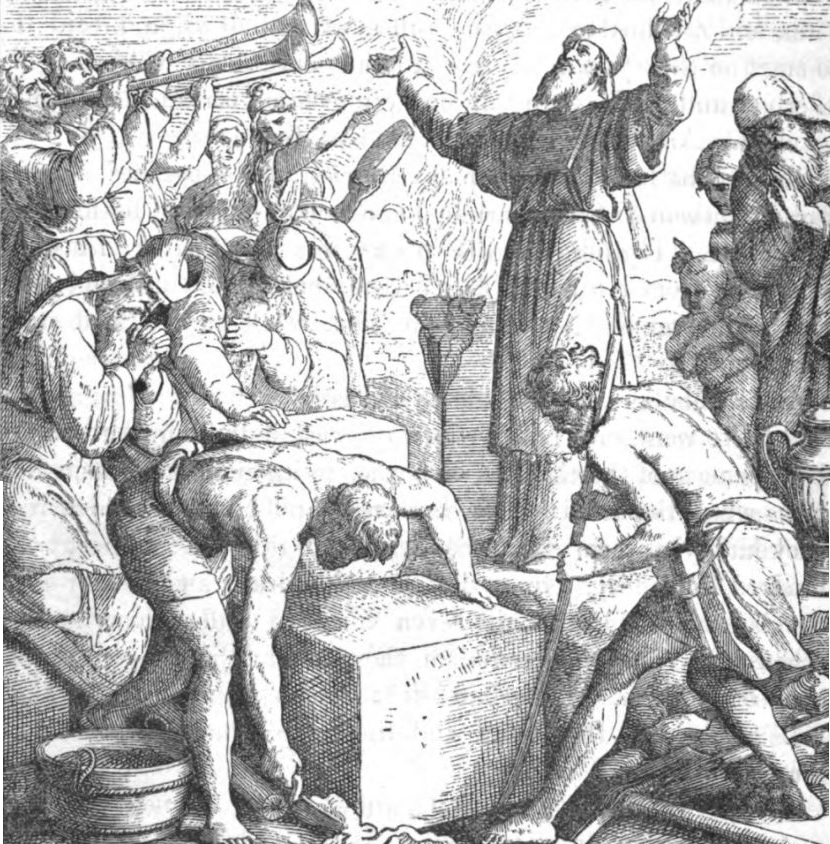
Rebuilding the Temple
Construction of the Temple
The construction of the temple itself was delayed until the second year of their being in the land, as construction materials had to first be collected (Ezra 3:6-7). After construction materials were on hand, the foundation was laid, which resulted in a tremendous celebration (Ezra 3:8-13).
The Building Construction Halted
The Samaritans were a mixed race of Jews and Gentiles who were living in the northern part of Israel. It was these people who became adversarial in the construction of the temple, as well as a hindrance to the construction of the walls around Jerusalem some years later under Nehemiah’s leadership (2 Kings 17:24-31; Nehemiah 2:10).
Zerubbabel and the High Priest Jeshua refused to allow the Samaritans to be involved in their construction work, nor did they permit them to worship alongside them, because this would have formed an ungodly alliance (Ezra 4:1-3).
Rejected and offended, the Samaritans began various methods of frustrating the construction work:
► They hired counselors to intimidate (Ezra 4:4-5).
► They wrote a letter to Artaxerxes, the Persian king, accusing the Jews in Jerusalem of seditious plans. This resulted in the temple work to be forcefully stopped (Ezra 4:6-24).
Revival through Preaching of Prophets Haggai and Zechariah
During the 16 years of construction shut down, the Jews in Jerusalem began to turn their eyes away from the temple and focused on themselves. This led the Lord to raise up a couple of prophets to speak to and inspire the people to get back on track.
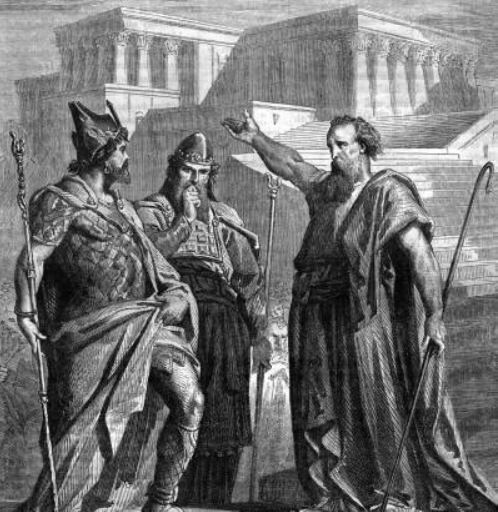
Haggai speaking to Zerubbabel and Jeshua
The prophet Haggai’s preaching included his:
► Accusation – that the people were saying it wasn’t the right time to rebuild the temple (Haggai 1:2).
► Denunciation – of the people for building their own homes but neglecting the temple of God (Haggai 1:4).
► Explanation – as to why God’s blessings were not resting on them (Haggai 1:6-11).
► Promise – that God’s blessing would come and enable them to complete the temple (Haggai 2:18-23).
The prophet Zechariah’s preaching included his:
► Revelation – that Satan was hindering the construction of the temple (Zechariah 3:1-2).
► Prophecy – that the work of construction would not be accomplished through their own human efforts, but by the Spirit of God (Zechariah 4:6).
► Prophecy – that just as Zerubbabel began the temple construction, he will complete it by laying the last brick, or capstone (Zechariah 4:7-9).
► Encouragement – not to despise the day of small beginnings (Zechariah 4:10).
► Encouragement – to be obedient to the words of the prophets (Zechariah 8:9).
The Results of the Prophets Work
Haggai and Zechariah’s prophetic messages stirred up Zerubbabel and the High Priest Jeshua, as well as all the people, and they returned to their construction work on the temple again (Haggai 1:12-15).
Most of the prophets of the Old Testament were disregarded, often imprisoned, and even killed. It was remarkable that we find here that the people listened and responded favorably to Haggai and Zechariah’s ministry:
At that time the prophets Haggai and Zechariah son of Iddo prophesied to the Jews in Judah and Jerusalem. They prophesied in the name of the God of Israel who was over them. Zerubbabel son of Shealtiel and Jeshua son of Jehozadak responded by starting again to rebuild the Temple of God in Jerusalem. And the prophets of God were with them and helped them (Ezra 5:1-2).
Though opposition arose, the favor of God rested on the people and the work on rebuilding the temple continued (Ezra 5:3-17), and it was finally completed 20 years after their arrival from Babylon (6:1-22).
► 16 years delay due to the opposition
► Following 4 years of construction at the urging of prophets Haggai and Zechariah, the temple was dedicated in 515 B.C. (Ezra 6:15–18; Zechariah 4:7–10).

Location of Babylon, in reference to a couple modern cities in Iraq
Passover Kept and Revival Experienced
This was the first recorded Passover held during the 20 years after their return from captivity in Babylon. It was at this time that the Scriptures clearly state, that the people
► Separated themselves from the corrupt practices of the land (Ezra 6:21).
► Sought the Lord (Ezra 6:21).
► Received the favor of God by Him turning the heart of the ruling authority to grant permission so the temple could be completed (Ezra 6:22).
Return to List of Revival Stories
Chet & Phyllis Swearingen:
Office: (260) 920-8248
romans1015@outlook.com
Beautiful Feet
P.O. Box 915
Auburn, IN 46706

